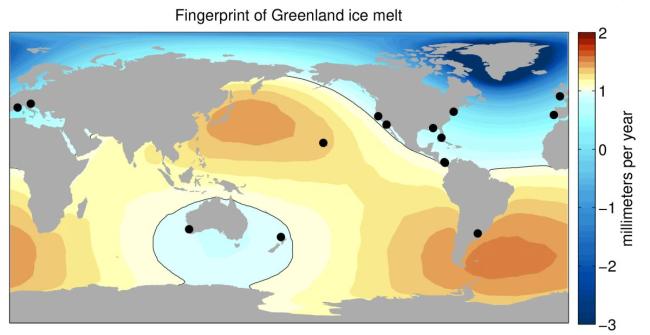Long tide gauge records may underestimate global sea level rise
Sea level does not change at the same pace everywhere at the same time. These differences from location to location can be caused by a variety of processes, but two of the most important are (1) winds blowing over the ocean and (2) melting of large ice masses. The former redistributes ocean volume within the basins, while the latter alters Earth's gravitational field and rate of rotation enough to change the distribution of ocean mass around the surface of the Earth. The pattern of sea level change associated with melting of a large ice mass is known as a “melt fingerprint,” because each ice mass produces a unique pattern.

New research published in Geophysical Research Letters shows that these effects may cause the longest and highest-quality records of historical ocean water levels to underestimate the amount of global average sea level rise that occurred during the 20th century. The reason is that these records are located where the processes described above tend to partially cancel out global mean sea level rise during the last 100 years. The effect is not large enough to be alarming, but it does have important implications for how much global sea level rise can be expected in the future for a given amount of global warming. The investigation concludes that it is highly unlikely that global average sea level rose less than 14 centimeters during the 20th century, while the most likely amount was closer to 17 centimeters.
Are long tide gauge records in the wrong place to measure global mean sea level rise? (Geophysical Research Letters)
1University of Hawai’i at Manoa
2Old Dominion University
3Jet Propulsion Laboratory
Topics
- Sea Level Rise
- Climate Change
